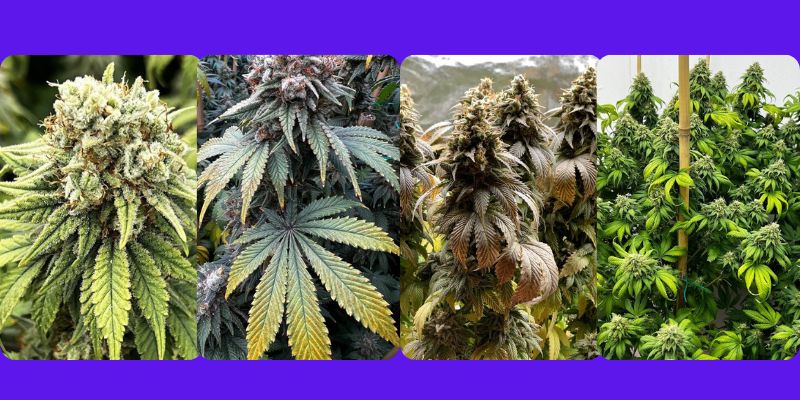New cannabis strains are continually being developed to combine the effects, aromas, and flavors of two or more strains into one new strain. Cannabis breeders are continually creating new weed strains to satisfy cannabis consumers developing tastes.
Breeding Cannabis Plants to Develop New Strains
Cannabis plants are dioecious, which means they can have either male or female reproductive organs in separate plants, which is rare in the plant world. Only female plants produce the buds, the plant flower, that contain the cannabinoids we like to smoke or use for creating edibles or other cannabis products. Female plants grow buds, and male plants grow pollen sacs to pollinate the females.
Mature males open up and release their pollen into the air to pollinate the females, which grow buds and also grow seeds. These new seeds from the female plant carry the genetics of both the pollinating male and the female plant.
What Is a Cannabis Phenotype?
When these new seeds are grown into new plants, they create a new strain combining traits from both parents, the male, and the female. The new seeds from the pollinated female are grown into new plants and are considered phenotypes, basically the children from the two parent plants.
When cannabis plants grow in the wild, the wind carries pollen from a male to a female. The female plant matures and dies, and the seeds fall to the ground and grow plants of the new strain the next year. Cannabis seed breeders create new phenotypes, a hybrid weed strain, based on traits such as effects, aroma, taste, yield, potency, ease of growing, resistance to disease, and other factors.
After a female plant is pollinated and grows to maturity, the seeds are collected and grown into new plants. These new phenotypes are referred to as a hybrid of both parent plants, also called crossbreeding. The phenotype is the physical expression of the plant’s genetic code, genotype, and environmental factors. There is a spectrum of physical possibilities that can basically be switched on or off in response to various environmental factors. Observable phenotype traits such as smell, color, shape, and resin production are all affected by the environment.
Genotype Versus Phenotype
The genetic makeup of the plant is called the genotype and provides the genetic blueprint for the structural formation of the cannabis plant. This genetic makeup, or the genotype, and the environment both affect a plant’s phenotype. The genotype contains the full set of genetic traits and the spectrum of possibilities the plant could exhibit. No two plants other than clones contain the exact same genome.
Cannabis Breeders and Pheno-Hunting
Pheno-hunting is a term that cannabis breeders use when searching for the best version, the best phenotype, or expression, of a new strain. Some phenotypes may look and smell good but not be very potent, while others may provide the right effects but not a very high yield. Cannabis breeders look for the best phenotypes to exhibit combined best traits in the new strain, which is why some strains have different numbers after them. It can take a few generations when pheno-hunting for the best version of a strain.
Breeders may start by growing 10 plants from 10 phenotype seeds, choose the best five of those to grow again, and then whittle that down to the best two or three, which are further derived down to the final phenotype choice. The breeder can then stabilize the genetics and mass-produce a new strain.
Stabilizing Cannabis Genetics
Phenotypes contain different genes, which means they are heterozygous. Cannabis breeders need to stabilize a strain to make sure that the seeds are homozygous, meaning they will all produce the same plant. Cannabis genetics are stabilized, meaning the phenotype will breed true and produce the same results each time you grow the plant. Breeders stabilize genetics through backcrossing and hybridization.
Filial 1 (F1) hybrids are considered first-generation hybrids, or the first children offspring of a new set of cannabis genetics. Filial 2 (F2) hybrids are second-generation hybrids, resulting from crossing two F1 phenotypes with each other. This breeding process can continue up to F5, after which point the plants are considered an inbred line (IBL). Backcrosses, or BX, result from crossing a phenotype with itself or one of its parents.
Home growers and commercial cultivators rely on experienced cannabis seed breeders to deliver the best of the best when developing new strains.
Mosca Seeds has more than 15 years of experience in cannabis seed breeding and delivering award-winning strains to the cannabis community. We offer a wide selection of regular seeds, feminized and autoflowers in potent Indicas, Sativas, and hybrids. Check out the seed bank for high-quality weed seeds online, including tried and true favorites and new drops of exciting new strains.
